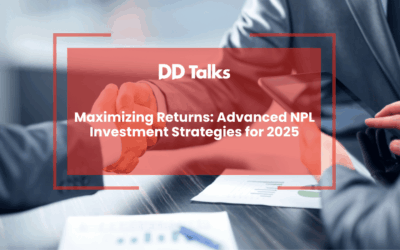The commercial property market is navigating challenges from rising interest rates, valuation uncertainties, and shifting investor behavior. While the office sector remains a pain point, early signs of recovery are emerging, particularly in residential and logistics sectors. Long-term recovery will hinge on accurate valuations, increased liquidity, and improved market transparency.
Interest Rates and Market Stagnation
Rising interest rates since March 2022 have made real estate financing more expensive, leading to a 20% drop in commercial property prices. The market has avoided a crash akin to the 2008-10 financial crisis, but uncertainties remain.
Challenges in Valuation
Lack of transaction activity has obscured accurate property valuations, particularly for large office buildings like London’s Citypoint. Diverging assessments, such as S&P’s valuation of Citypoint (£431m) versus its earlier appraised value (£670m), reflect the uncertainty.
Investor Behavior
Some funds and managers have delayed acknowledging value declines, aiming to “hold their breath” until market conditions improve. Transparency varies across the industry, with concerns about inflated returns in some portfolios.
Signs of Recovery
A peak in interest rates and slight increases in transaction volumes signal potential market recovery. Sectors like residential and logistics properties show stabilizing or rising values, suggesting a shift in investor confidence.
Long-Term Adjustments
Analysts predict a slow, protracted recovery over the next 24-36 months, with valuations gradually adjusting as transaction volumes increase. Stronger financial regulations post-2008 have distributed real estate risks more broadly, reducing systemic vulnerabilities.
Sector-Specific Challenges
Offices remain a pain point due to hybrid work trends and reduced demand, accounting for 90% of distressed assets in some markets. Retail properties also face struggles, though these are less significant in the broader real estate context.
Notable Transactions
The planned sale of Citypoint by Brookfield for over £500m is a test case for the market, reflecting investor appetite and pricing adjustments. Other notable assets, like London’s “Can of Ham,” are also entering the market, further clarifying valuations.
Investor Adaptations
Funds like Blackstone’s BREIT and Starwood’s SREIT have sold assets, limited redemptions, and adjusted strategies to manage liquidity and avoid fire sales. Both funds face scrutiny for slow write-downs but have shown resilience in stabilizing amid investor withdrawals.
Outlook
The commercial property market is entering a “moment of truth.” Recovery will depend on interest rate trends, accurate valuations, and improved liquidity. While risks persist, particularly in the office sector, positive momentum in areas like logistics and residential properties suggests that the worst may be over for parts of the industry. However, market participants must navigate the transition carefully to avoid prolonged stagnation.
FAQs
- Why have commercial property prices dropped?
- Rising interest rates since March 2022 have increased financing costs, leading to a 20% drop in prices.
- What sectors are showing signs of recovery?
- Residential and logistics properties are stabilizing or rising in value, signaling a shift in investor confidence.
- Why are office properties struggling?
- Hybrid work trends and reduced demand have made offices a significant pain point, accounting for 90% of distressed assets in some markets.
- What is the outlook for the commercial property market?
- A slow recovery is expected over the next 24-36 months, with adjustments in valuations and increased transaction volumes driving improvements.
- How are investors adapting to current market challenges?
- Investors are managing liquidity by selling assets, limiting redemptions, and adjusting strategies to stabilize portfolios.




0 Comments